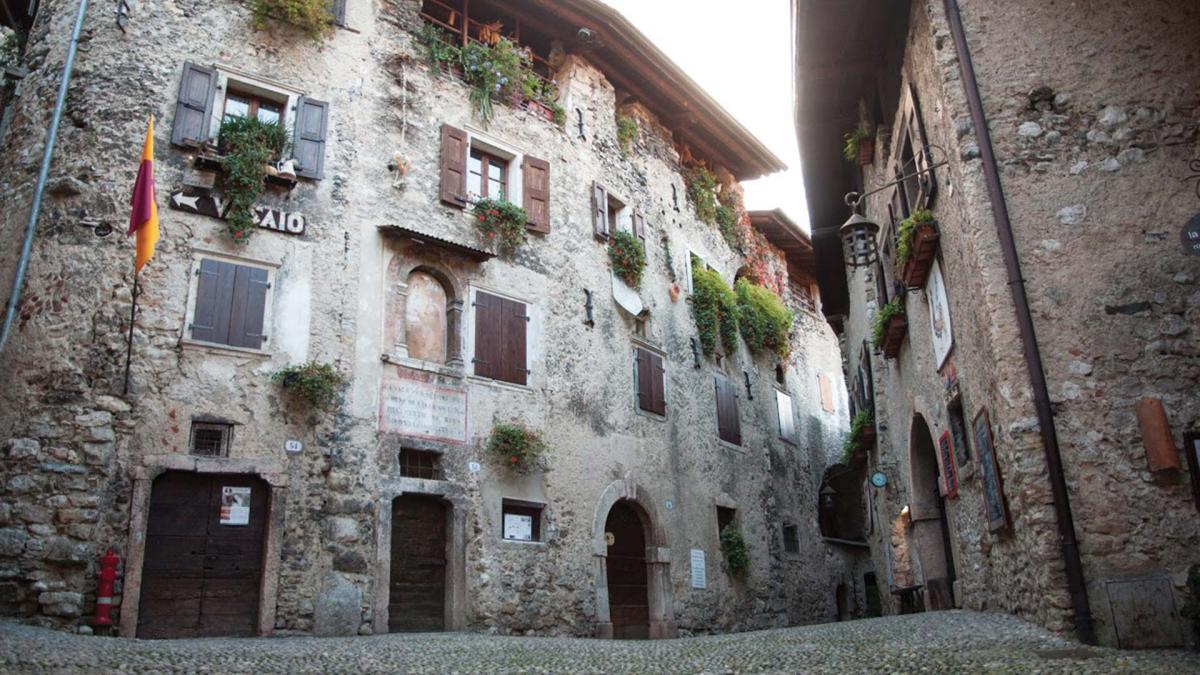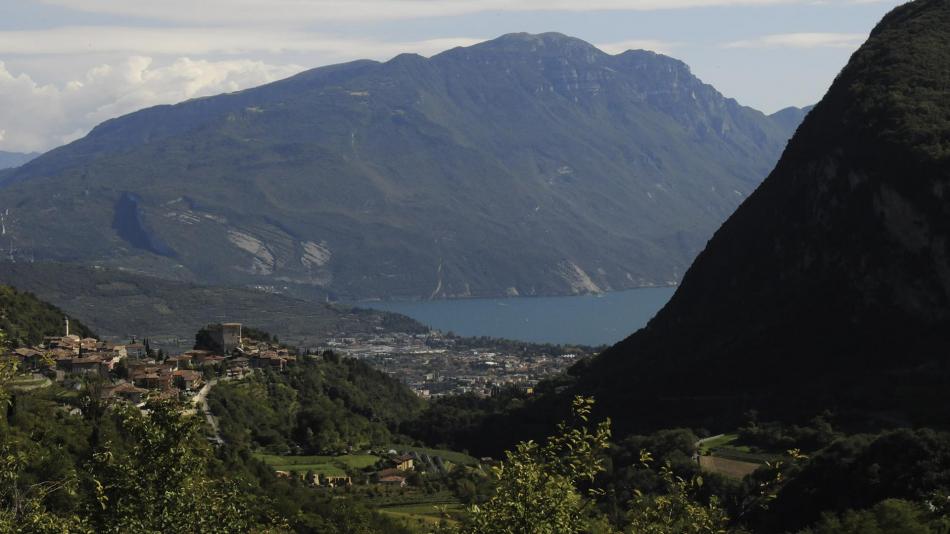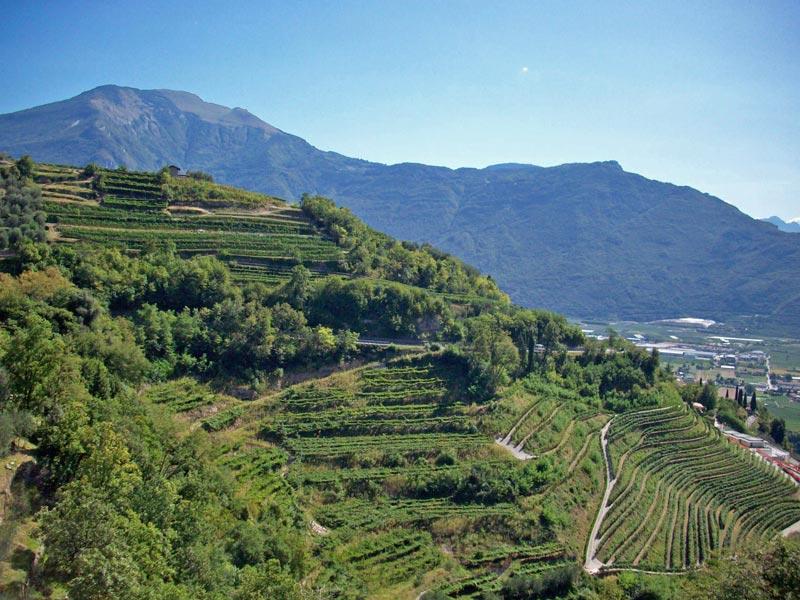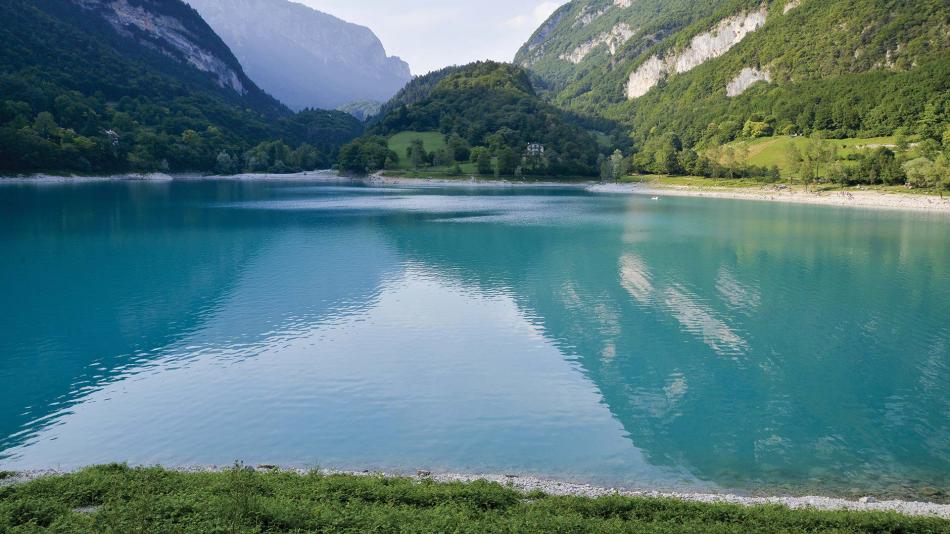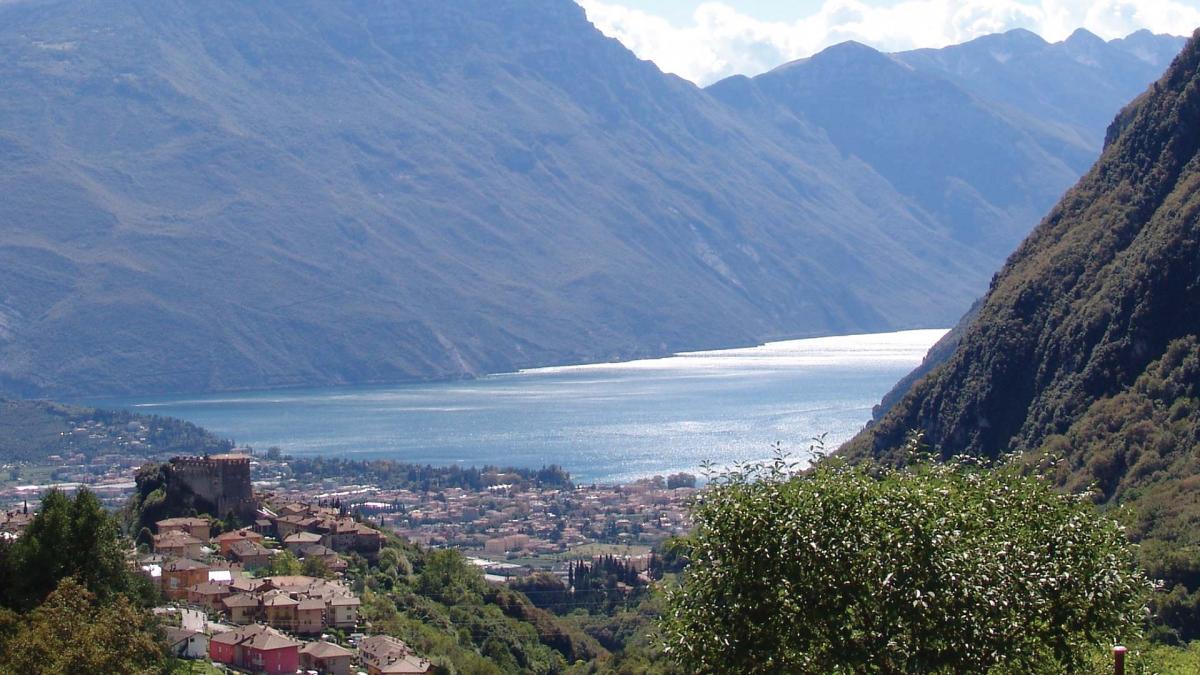The communities
Ville del Monte bears an ancient name. It is the highest and most northerly of the four villas of Tennese, and the only one that still keeps the name that belonged to the "vicinie". The outlying suburb is composed of four villages – Canale, Calvóla, Pastoédo and Sant'Antonio – and the new part of the village, the Matóni. The new district is located near Lake Tenno while Sant'Antonio, the oldest village, lies down the road. Here the beautiful Romanesque church is dedicated to Sant'Antonio, patron saint of animals and particularly loved by farmers. A traditional festival dedicated to him is still celebrated every year.
Just above this lies the village of Pastoédo, which offers glimpses of great splendour with its narrow alleys and particularly beautiful Trentino architecture, surrounded by well cared for vegetable gardens. Coming from Pastoédo, you reach Canale and then Calvóla. Even in this small village between Monte Calíno and San Pietro, art treasures can be found. Of particular importance is an early 17th century altarpiece dedicated to Santa Lucia in the Church of San Giovanni, linked to the famous painter Theofilo Polacco (1570 – 1639). There are also ancient frescoes and works by Vittone. Simple frescoes adorn house walls, the fountain and a drinking trough in the square adding beautiful decoration to the rustic plastered walls and old wooden balconies.
The Ville territory reflects the pastures and forests of the mountains above, preserving important assets: timber and fodder. For centuries these resources have been the source of livelihood for the local communities, as it continues to do today. They provide the pasture for goats, sheep and cows, which in turn produce cheese with an intense aroma and delicate flavour, available in extremely limited quantities.
The area is mentioned in ancient texts. There are documents citing the "vicus" (a settlement), as far back as 770AD.
Pranzo was one of the first places to have its own “regola”, a collection of rules for living in harmony together, it was the only place to have such rules on the western shore of the Magnone torrent. This river was a major source of energy which made this an important production site for centuries, with workshops and mills. The remaining evidence of this can be seen today in abandoned buildings at the bottom of the valley. The crafts practised in this area are now remembered in the large wooden panels carved by local artists found along the artists' route that winds its way through the village. The view is dominated by the age-old stone bell tower of the church of San Leonardo and the large and pleasantly proportioned houses, but above all by the forest of chestnut trees surrounding the village that continues towards Monte di San Martino, whose rock buttress overshadows the Tennese. In San Martino, recent archaeological excavations (which are still ongoing) are unearthing traces of an ancient settlement that stood here from prehistoric times until the early Middle Ages, but was then inexplicably abandoned.
The story of this mysterious and charming place, located on a plot owned by the Municipality of Tenno, long lost in time is being rediscovered in the outlines of houses and an ancient church and in Roman and primitive artefacts, the significance of which have yet to be understood. Standing out above the houses of Pranzo is the Maronèr de Garibaldi. Legend (and history) records that it welcomed and gave protection to the troops of the "Hero of Two Worlds" Giuseppe Garibaldi during the battles for Italian independence. An imposing and magnificent age-old tree, heralds the large and beautiful chestnut grove where the traditional and excellent "maroni" chestnuts are produced (an especially valued type of chestnut), celebrated in the festival named after it that takes place in Pranzo every year in October. Tenno is dominated by an imposing castle, stronghold for centuries of the Prince-Bishops of Trento, built on the site of an ancient castle. The castle can be clearly seen from the neighbouring villages. Its strategic vantage point overlooking Lake Garda, offers a wide range of interests - historical, artistic and gastronomic as well as people and events of special significance. In this territory, the Church of San Lorenzo stands out, with its Romanesque and Gothic frescoes and decorations from the Lombardic period (568-774), and the village of Frapporta, which offers a glimpse into the Middle Ages.
The two towns of Cologna and Gavazzo constituted the ancient Vicinia della Collina, the southernmost point of the Tenno area. The ancient church of San Zenone, with its splendid frescoes, sums up the typical elements of this territory: a history that fostered traditions and a remarkable cultural heritage as well as one of the best views in the whole of Alto Garda. The Varone waterfall also offers an extraordinary and impressive spectacle hidden in a narrow ravine rock, and is highlighted in all the tourist guides. The very special climate has made a thousand years of olive cultivation possible. An evocative and symbolic plant, adding to the views of incredible beauty, but also a product of excellence. The extra virgin olive oil is more a passion than a job for many small olive growers, united in a consortium to enhance the Tennese products. Together with the "carne salada" (meat which is preserved in salt according to a traditional method), offers food of extraordinary quality.
